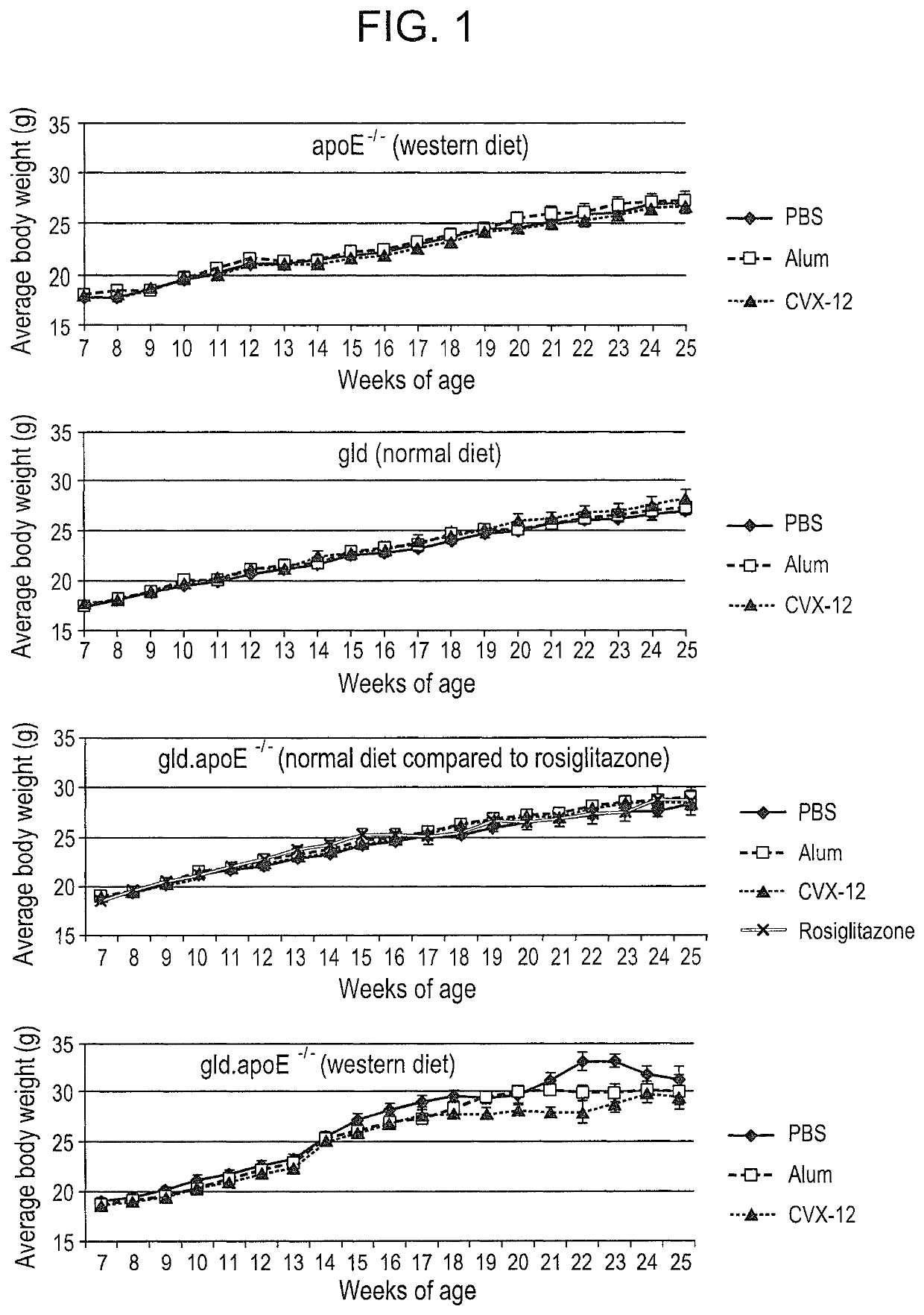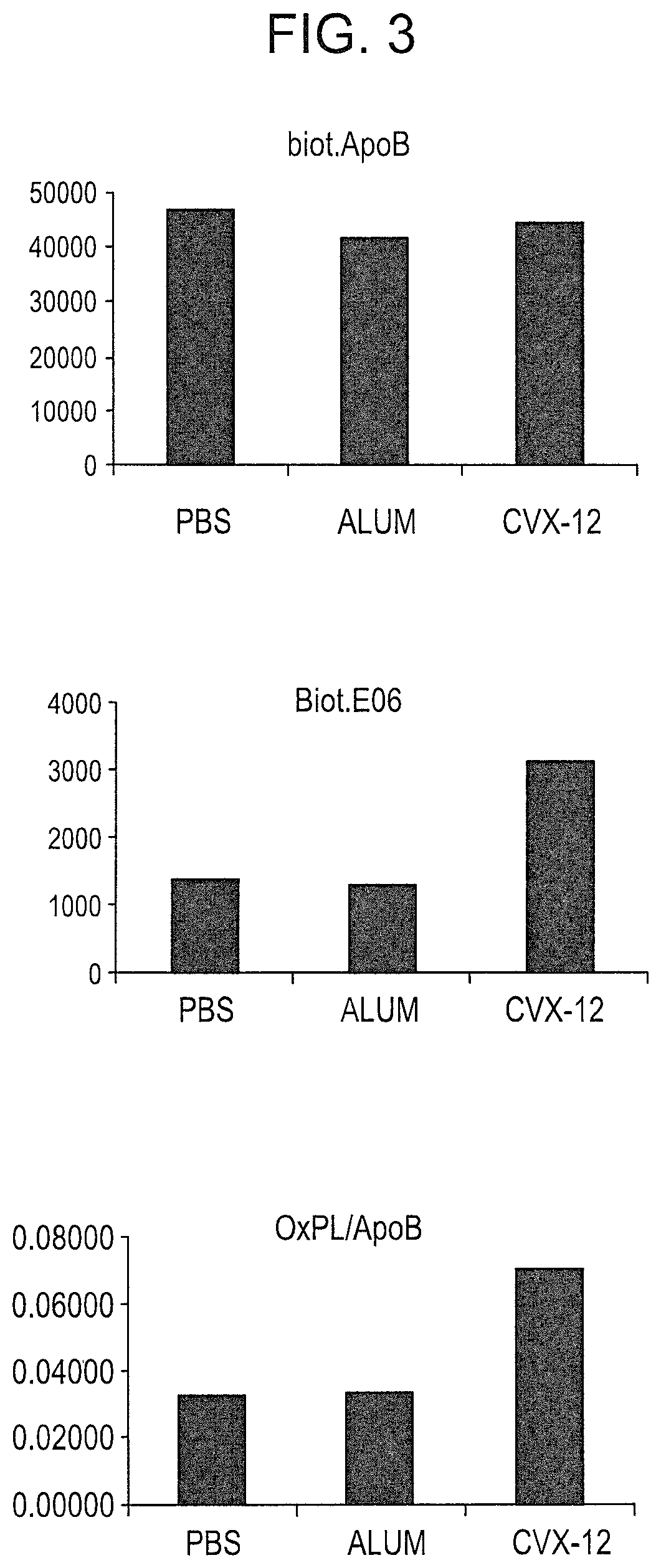Methods for treating systemic lupus erythematosus with an anti-apolipoprotein B antibody
- Summary
- Abstract
- Description
- Claims
- Application Information
AI Technical Summary
Benefits of technology
Problems solved by technology
Method used
Image
Examples
example 2
Levels of Soluble Death Receptors are Associated with Cardiovascular Disease in Systemic Lupus Erythematosus
[0336]Since dysregulation of apoptosis has been implicated in atherosclerosis the present study investigated if plasma levels of the death receptors Fas, TRAIL receptor 2 (TRAIL-R2) and TNF-R1 are related to the presence of cardiovascular disease (CVD) in patients with SLE.
[0337]Patients and Controls.
[0338]Patients and controls were included between January 2004 and October 2013. All patients who fulfilled four or more of the 1982 revised American College of Rheumatology (ACR) classification criteria for SLE [Tan E M et al. The 1982 revised criteria for the classification of systemic lupus erythematosus. Arthritis Rheum 1982; 25:1271-7]. Patients were required to be older than 18 years, otherwise there were no exclusion criteria. Population controls, individually matched to the first 322 SLE patients were identified in the population registry. Matching was ...
example 3
s of Apolipoprotein B-100 Autoantibodies are Associated with Increased Risk of Coronary Events
[0376]Previous smaller studies have indicated inverse associations between autoantibodies to oxidized low-density lipoprotein epitopes, and cardiovascular disease. The present study investigated associations between autoantibodies against the apolipoprotein B-100 peptides P45 and P210, respectively, and risk of incident cardiovascular disease in a large population-based cohort.
[0377]Apolipoprotein B-100 autoantibodies were analyzed by ELISA in a prospective study, including 5393 individuals (aged 46-68 years) belonging to the cardiovascular arm of the Malmö Diet and Cancer study with a follow-up time of >15 years. Subjects that suffered an acute coronary event during follow-up (n=382) had lower levels at baseline of IgM autoantibodies recognizing the native and malondialdehyde-modified apolipoprotein B-100 peptides P45 and P210 and also lower IgG levels recognizing native P210, whereas no a...
example 4
Levels of Autoantibodies Against Apolipoprotein B-100 Antigens are Associated with Cardiovascular Disease in Systemic Lupus Erythematosus
[0411]Increased production of autoantibodies is a characteristic feature of systemic lupus erythematosus (SLE) and there is evidence that several of these autoantibodies may contribute to increased cardiovascular disease (CVD) in SLE. Autoantibodies against the apolipoprotein (apo) B-100 peptides P45 and P210 have been associated with a lower CVD risk in non-SLE cohorts. The aim of the present study was to investigate how SLE affects the occurrence of these potentially protective autoantibodies. The study cohort consisted of 434 SLE patients and 322 age- and sex-matched population controls. Antibodies against native and malondialdehyde (MDA)-modified P45 and P210 were measured by enzyme-linked immunosorbant assay (ELISA). SLE patients had significantly lower levels of P210 immunoglobulin (Ig)G and P45 IgM (both the native and malondialdehyde (MDA)-...
PUM
| Property | Measurement | Unit |
|---|---|---|
| Time | aaaaa | aaaaa |
| Time | aaaaa | aaaaa |
| Time | aaaaa | aaaaa |
Abstract
Description
Claims
Application Information
 Login to View More
Login to View More - R&D
- Intellectual Property
- Life Sciences
- Materials
- Tech Scout
- Unparalleled Data Quality
- Higher Quality Content
- 60% Fewer Hallucinations
Browse by: Latest US Patents, China's latest patents, Technical Efficacy Thesaurus, Application Domain, Technology Topic, Popular Technical Reports.
© 2025 PatSnap. All rights reserved.Legal|Privacy policy|Modern Slavery Act Transparency Statement|Sitemap|About US| Contact US: help@patsnap.com



